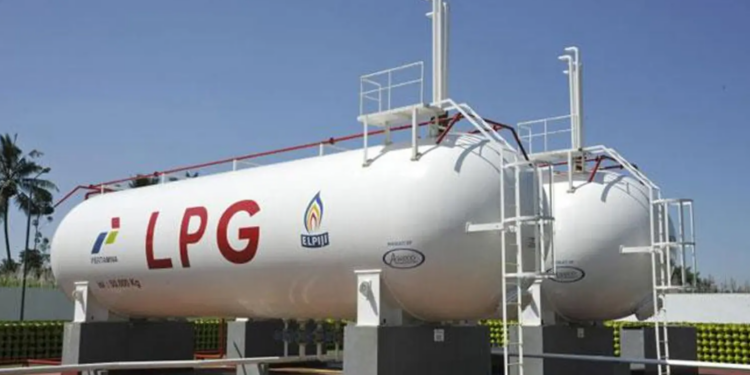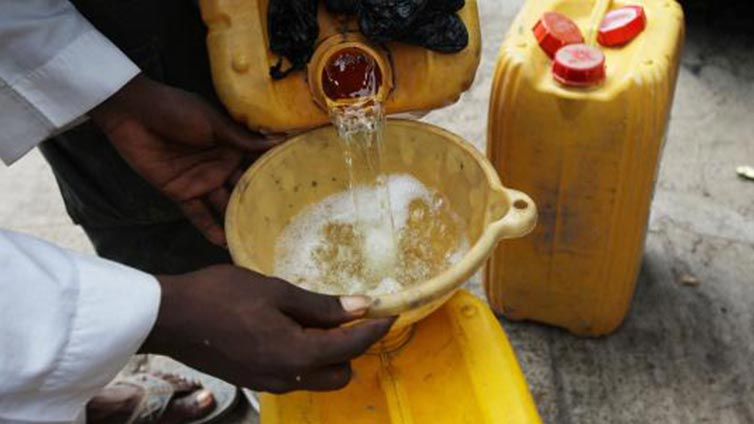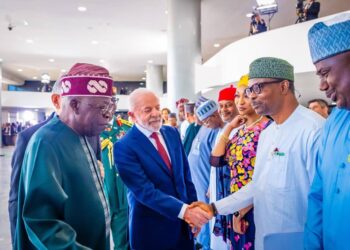In Nigeria, liquefied petroleum gas (LPG) has been on the rise since September 2023, steadily growing, and is now being purchased at between N1,000 and N1,200 per kilogram, depending on the location of the buyer.
A recent review by Nairametrics highlighted that the cost of refilling a 12.5-kg LPG cylinder is averaging between N11,000 to N12,500, depending on the state.
This shift comes after President Bola Ahmed Tinubu’s announcement of fuel subsidy removal, which led to a spike in petrol prices from N185 to N615 per litre, prompting many Nigerians to switch their generators and vehicles to run on gas, including LPG.
In August 2023, for generators with a 7.5kVA rating or lower, the cost of conversion ranged from N50,000 to N55,000 if the cylinder and all required accessories were provided.
However, if these were not included, the cost would rise from N90,000 to N95,000.
On the other hand, generators with a rating higher than 7.5 kVA had conversion costs ranging from N55,000 to N100,000, again depending on the presence of necessary components.
Experts believe the recent surge in LPG prices can be attributed to increased demand, exacerbated by foreign exchange challenges.
This upward trend is a consequence of Nigeria’s dependence on LPG imports due to inadequate local production capacity and insufficient processing and storage facilities.
Despite the rising demand for conversions to LPG, as outlined by Solomon Asogba, the Lead Business Intelligence Analyst at Hydrocarbon Information Services Limited (HydroCIS), in July 2023, local prices are significantly affected by international pricing.
This underscores the need for developing more gas processing facilities and enhancing storage capacity within the country to stabilise local LPG prices.
According to a recent infographic by HydroCIS and the Nigeria Liquefied Petroleum Gas Association (NLPGA), the average cost of a 12.5kg LPG cylinder in Nigeria reduced from about ₦10,300 to roughly ₦7,500 in August 2023.
However, as of October 9th, it has increased to around ₦9,350 at ex-plants, indicating a dynamic and evolving market. According to the infographic, there are several key factors affecting LPG prices in the country, including:
The International Price Index
According to HydroCIS, major players in the gas sector follow an international pricing index to establish the prices of gas products. When global prices rise, local prices tend to follow suit.
Various factors influence the cost of Butane and Propane (the major components of LPG) per metric ton, including the ongoing Russia-Ukraine conflict, supply constraints, and foreign exchange rates.
It is important to note that in Nigeria, the United States-based Mont Belvieu (MBV) pricing index is commonly used on a free-on-board basis, encompassing freight and associated costs.
Similarly, the Platts Pricing Index is also applied in Nigeria, also on a free-on-board basis, which includes freight and related costs.
These pricing indices provide a framework for determining the local prices of gas products in alignment with international market fluctuations.
Naira-Dollar Exchange Rate
HydroCIS pointed out that the price of LPG is determined based on the US dollar. When the naira weakens against the dollar, it tends to have a detrimental impact on LPG prices.
It’s crucial to understand that LPG pricing is significantly influenced by the exchange rate, particularly the naira-to-dollar rate.
To put this into perspective, let’s look at some recent data. In January 2022, in the parallel market, the naira stood at N565 to a dollar. By January 2023, this rate escalated to N750 to a dollar.
Moving forward, in September 2023, the naira weakened even further to N1000 to a dollar. As of the latest update on October 11, 2023, the naira had depreciated to N1040 to a dollar in the parallel market.
These shifts in the Naira-Dollar exchange rate have a direct impact on the pricing of LPG.
As the naira continues to weaken against the dollar, it amplifies the cost of LPG, affecting consumers and businesses alike. Keeping track of these currency fluctuations is essential to comprehending and anticipating changes in LPG prices.
Local production versus imports
As noted by HydroCIS, the cost of LPG in Nigeria is influenced by its source. The LPG market in Nigeria is supplied through both imported and locally sourced products, each contributing to meet the demand.
In terms of quantity, local production covers a significant portion of consumption. However, to bridge the supply gap, imports play a vital role.
The balance between locally produced and imported LPG helps maintain a steady supply to meet the growing demand.
In August 2023, the Managing Director/Chief Executive Officer of Nigeria Liquefied Natural Gas (NLNG) Limited, Dr. Philip Mshelbila, emphasized the efficiency of NLNG’s Domestic LPG (DLPG) Scheme. This scheme ensures a consistent and cost-effective supply of LPG within Nigeria.
Notably, all LPG volumes produced by NLNG are dedicated to the domestic market, covering about 40% of Nigeria’s LPG demand.
The remaining 60% is met through imports, underlining the importance of both local production and imports in catering to the nation’s LPG requirements.
Supply and demand
As mentioned earlier, LPG demand surged after the official termination of fuel subsidies in May 2023, causing a notable increase in pump prices. Consequently, a growing number of households and small business owners have made the switch to LPG for their generators and vehicles.
In economic terms, when demand surpasses supply, prices tend to rise. Conversely, when demand is low and supply is abundant, prices tend to decrease.
Therefore, it’s evident that gas prices are closely tied to the interplay between demand and supply within the market.
Geopolitical and natural events
As highlighted by HydroCIS, the ongoing Russia-Ukraine war, which has persisted since 2022, has significantly influenced the rise in LPG prices, particularly impacting imports.
The constraints in supply caused by this prolonged conflict led to a global increase in LPG prices, reaching approximately $900 per metric ton in March 2022.
This conflict-induced supply disruption has reverberated across international markets, impacting the cost of LPG. Furthermore, seasonal shifts play a pivotal role in determining LPG prices on the global stage.
During the transition from summer to winter and vice versa, prices experience fluctuations.
Typically, gas prices decline during the summer and escalate in the winter due to heightened demand for heating in temperate regions.
Size and scale factor
In the realm of LPG imports, pricing in dollars is notably influenced by the size and scale of transportation vessels. According to HydroCIS, the costs per metric ton for different capacities are as follows:
- A shuttle vessel with a 3,000-metric-ton cap capacity incurs a cost of $150 per metric ton.
- A large gas carrier holding an 18,000-metric-ton cap capacity has a cost of $30 per metric ton.
In addition to vessels, land-based transportation also factors into LPG pricing:
- An 8-metric-ton capacity bobtail truck for LPG entails a cost of $80 per metric ton.
- A bridger truck with a 25-metric-ton cap capacity for LPG is priced at $10 per metric ton.
Understanding these costs in relation to transportation capacity sheds light on the variables influencing the pricing structure for LPG imports in the country.
Larger transport capacities tend to lower the cost per metric ton, showcasing the economy of scale in LPG logistics.
What you should know
Felix Ekundayo, President of the Nigeria Liquefied Petroleum Gas Association, clarified to Nairametrics that the Niger Republic’s decision to halt LPG exports into Nigeria is not anticipated to significantly impact the country’s LPG market.
He emphasised that LPG imports and exports primarily occur between Niger and the northern parts of Nigeria, with a trade balance more in favour of Niger.
He also underscored that LPG prices are predominantly influenced by forex rates. This insight highlights the imperative for the nation to collaborate with the private sector in establishing gas processing facilities, aiming for 100% local LPG delivery to mitigate the influence of forex rates.
However, achieving this goal necessitates decisive action against crude oil theft to ensure a steady supply of gas for processing, aligning with the vision of reducing forex dependence in the LPG market.





















